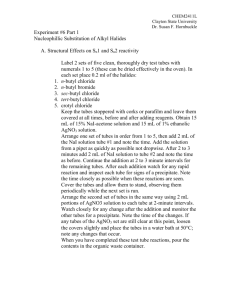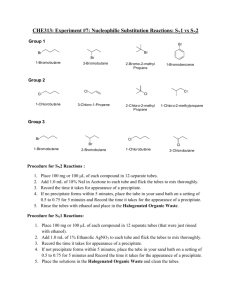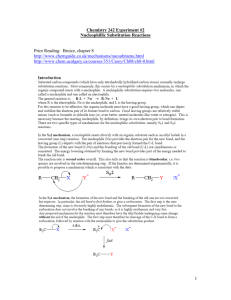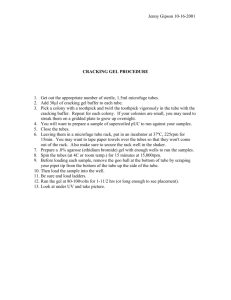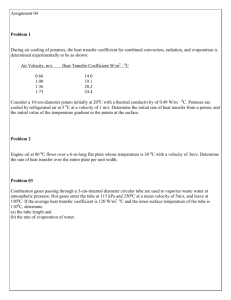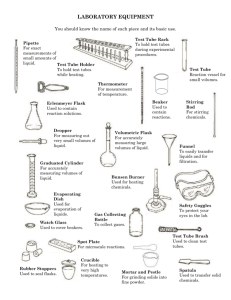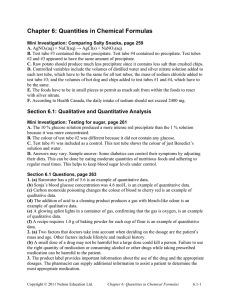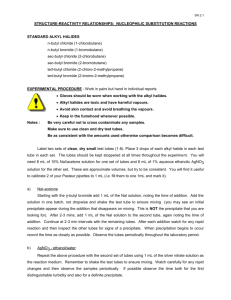Soap Suds Titration
advertisement
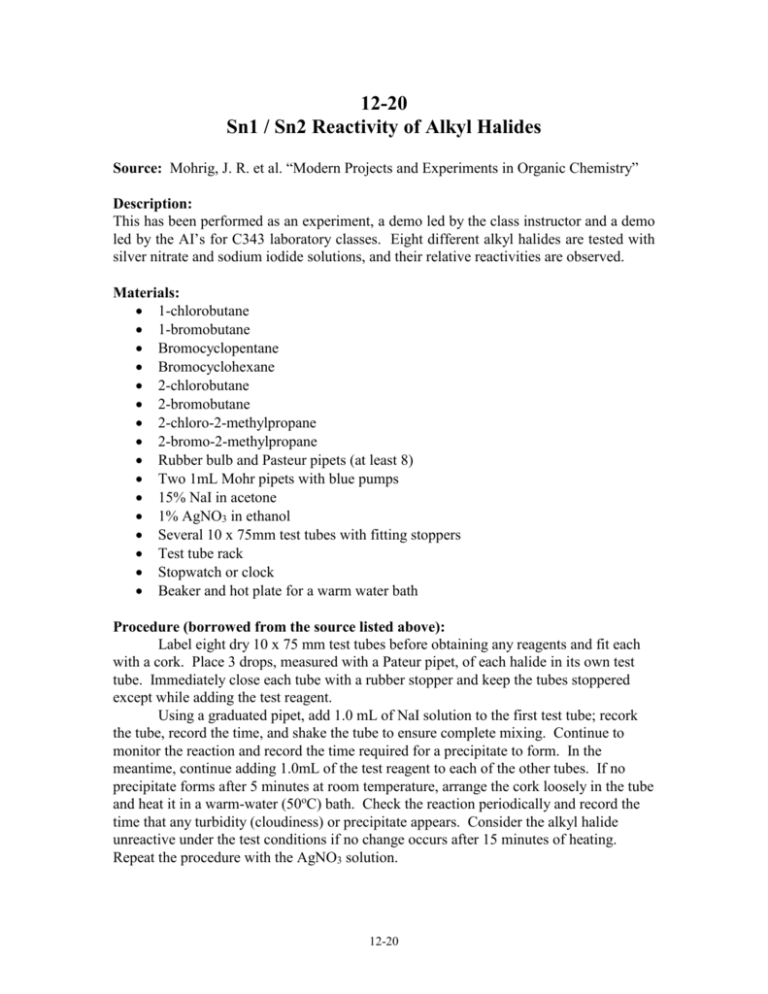
12-20 Sn1 / Sn2 Reactivity of Alkyl Halides Source: Mohrig, J. R. et al. “Modern Projects and Experiments in Organic Chemistry” Description: This has been performed as an experiment, a demo led by the class instructor and a demo led by the AI’s for C343 laboratory classes. Eight different alkyl halides are tested with silver nitrate and sodium iodide solutions, and their relative reactivities are observed. Materials: 1-chlorobutane 1-bromobutane Bromocyclopentane Bromocyclohexane 2-chlorobutane 2-bromobutane 2-chloro-2-methylpropane 2-bromo-2-methylpropane Rubber bulb and Pasteur pipets (at least 8) Two 1mL Mohr pipets with blue pumps 15% NaI in acetone 1% AgNO3 in ethanol Several 10 x 75mm test tubes with fitting stoppers Test tube rack Stopwatch or clock Beaker and hot plate for a warm water bath Procedure (borrowed from the source listed above): Label eight dry 10 x 75 mm test tubes before obtaining any reagents and fit each with a cork. Place 3 drops, measured with a Pateur pipet, of each halide in its own test tube. Immediately close each tube with a rubber stopper and keep the tubes stoppered except while adding the test reagent. Using a graduated pipet, add 1.0 mL of NaI solution to the first test tube; recork the tube, record the time, and shake the tube to ensure complete mixing. Continue to monitor the reaction and record the time required for a precipitate to form. In the meantime, continue adding 1.0mL of the test reagent to each of the other tubes. If no precipitate forms after 5 minutes at room temperature, arrange the cork loosely in the tube and heat it in a warm-water (50oC) bath. Check the reaction periodically and record the time that any turbidity (cloudiness) or precipitate appears. Consider the alkyl halide unreactive under the test conditions if no change occurs after 15 minutes of heating. Repeat the procedure with the AgNO3 solution. 12-20
